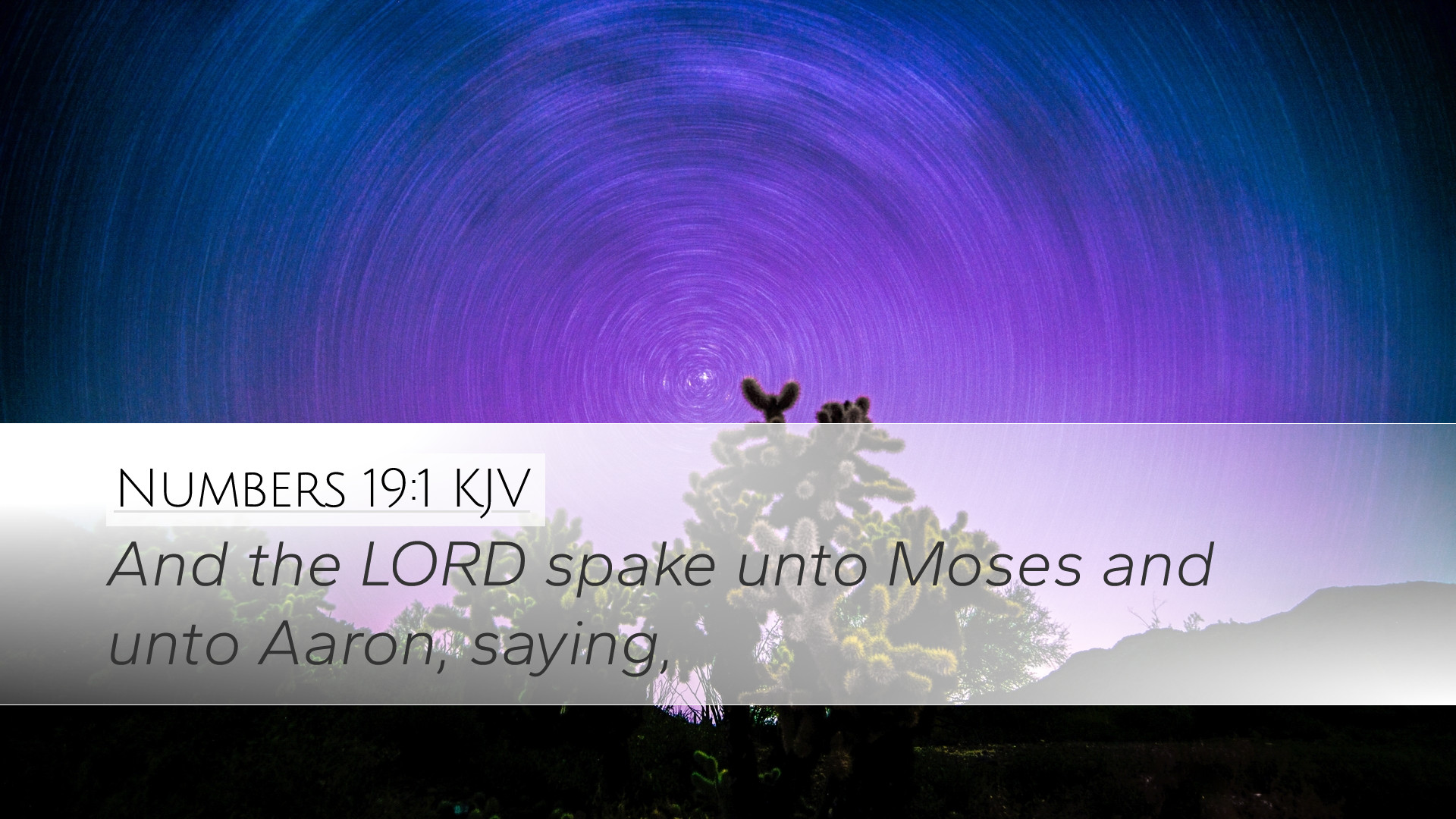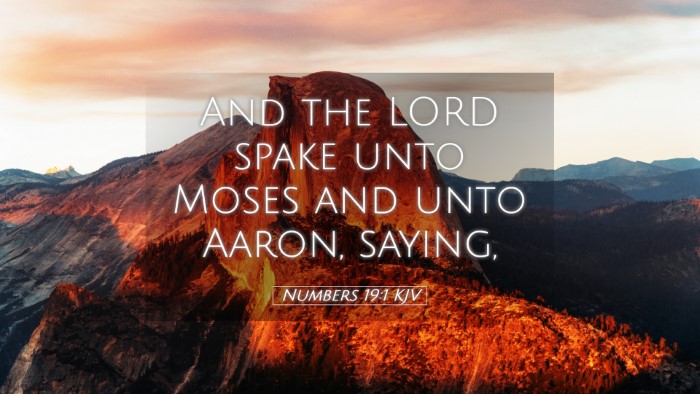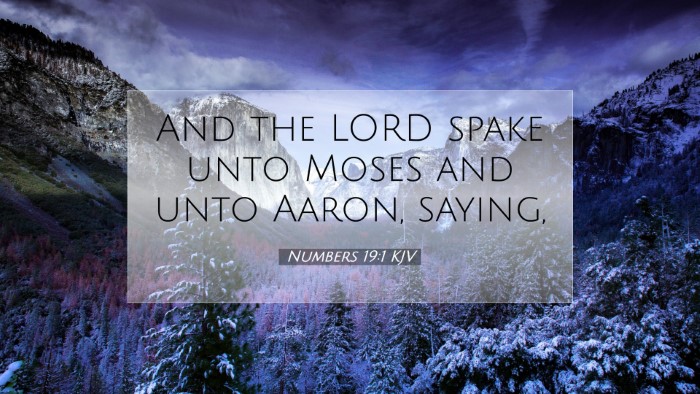Commentary on Numbers 19:1
Bible Verse: "And the LORD spake unto Moses and Aaron, saying," (Numbers 19:1, KJV)
Introduction
The instruction regarding the red heifer in Numbers 19:1 initiates a profound chapter about purification and the sacrificial system within Israel's religious practices. Public domain commentaries, including insights from Matthew Henry, Albert Barnes, and Adam Clarke, provide a rich understanding of this significant passage.
The Context of Numbers 19
This chapter appears at a critical junction in the journey of the Israelites, where issues of ceremonial purity become paramount. The preceding chapters focus on God's instructions for the religious and societal organization of His people, leading to the specific command given in this verse.
- Divine Initiative: The phrase "And the LORD spake" highlights God's direct communication, emphasizing His authority in the matter.
- Moses and Aaron: Their roles as mediators are underscored, showing continuity in God's covenantal relationship with His people.
Observations from Commentaries
Matthew Henry's Commentary
Henry notes that the command concerning the red heifer sheds light on the nature of sin and the necessary provisions for atonement and purification among God’s people. He emphasizes the following points:
- The Necessity of Purity: Spiritual and ceremonial purity were essential for approaching God, reflecting the holiness required in worship.
- The Role of the Sacrifice: Henry illustrates how the red heifer symbolizes the future sacrifice of Christ, pointing to the cross where ultimate atonement was made.
Albert Barnes' Notes on the Bible
Barnes expounds on the particular requirements of the red heifer and highlights how these regulations served to reinforce the nation’s understanding of holiness. Key insights include:
- Symbol of Sin: The red heifer acts as a type for sin; its red color signifies the bloodshed necessary for cleansing.
- God's Instructions: Barnes stresses that God's manner of speaking to Moses and Aaron illustrates His desire to provide clear guidelines for worship and daily life.
Adam Clarke's Commentary
Clarke provides a more historical and ritualistic analysis of the verse. His observations suggest:
- Cultural Significance: The practices surrounding the red heifer were ingrained in Israelite culture, emphasizing communal responsibility for spiritual fitness.
- Types of Christ: He vividly draws parallels between the purification rites of the heifer and the atoning work of Christ, urging believers to recognize the foreshadowing inherent in these rituals.
Theological Implications
Understanding Numbers 19:1 from these commentaries reveals profound theological implications regarding sin, purification, and Christology:
- Sin’s Consequence: The chapter underscores the reality of sin's defilement and the need for a remedy.
- Christ as Fulfillment: The red heifer is a typology pointing to Jesus, suggesting that the ultimate means of purification comes through His sacrifice.
- Continuity in Worship: This passage illustrates the continuity of God’s redemptive plan throughout scripture; what begins in the Old Testament finds its ultimate fulfillment in Christ.
Conclusion
In summarizing these insights, one sees that Numbers 19:1 is not merely a historical command but a theological cornerstone for understanding God's nature, the seriousness of sin, and the promise of redemption. For pastors, students, theologians, and Bible scholars, the implications of this verse stretch into practical application: the necessity of holiness in worship and daily life, and the assurance found in Christ as the ultimate atonement.


